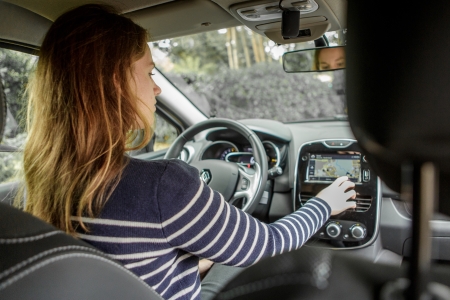The European Commission points to the following possible disadvantages of ITS and ADAS: distraction, triggering hazardous behaviour and confusion [13]. Thus, it is unwise to set the navigation system while driving, to have a small (navigation) screen positioned far aside from the driving direction forcing prolonged glances away from the road, etcetera. It may also be confusing when an intelligent speed assistant indicates an incorrect (for example temporary) speed limit. If part of a driving task, for example changing lanes, is taken over, this should happen in a natural way – similar to the way a human driver would operate – so as not to confuse other road users.
A further area of concern is the ‘transfer of control’. When a system fails or does not (yet) function in a particular situation, the driver must know that he should take over control. This requires appropriate and timely communication with the driver (also see the design principles of UNECE dating from 2017 [14]).
Not much is known about the (incorrect) use of systems. Studies into the effects, based on (prevented) crashes, have been done, but these mostly concern the presence of a system. It is usually not known whether the system was enabled nor, more importantly, how it was used. In Naturalistic Driving studies however, drivers are followed by cameras, among other things, which means that the way systems are used can be determined. An extensive American Naturalistic Driving study [16] also found a sufficient number of crashes to allow saying something about the risk of operating devices in cars. Operating of devices such as the airconditioning and the radio occurred in, respectively, 0.56% and 2.21% of the distance travelled. Operating a system while driving was part of the residual category of 0.83% of the distance travelled. The 4.6% risk (odds ratio) of this residual category proved to be significantly higher than that of operating the airconditioning (2.3) and the radio (1.9). The 4.6 risk means: 4.6 times more crashes per distance travelled than average.
People adapt their behaviour to (changing) circumstances - a road safety measure that has been implemented for example. This is called behavioural adaptation [17]. This implies that the hypothetical effect of measures such as ITS/ADAS will, in actual fact, turn out differently [18]. Thus, the presence of a night vision system may tempt drivers to drive (faster) in the dark more often than without such a system, which will (partly) annihilate the potential benefit. It is therefore essential to monitor the actual effects and to adapt the system accordingly.
